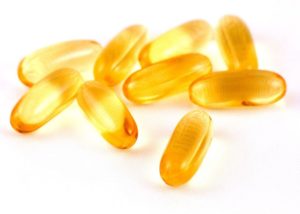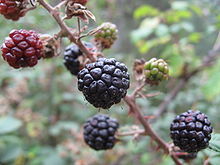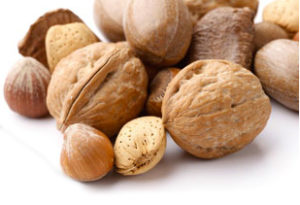 This study found that greater intake of dietary nitrate and green leafy vegetables was associated with a 20 percent to 30 percent lower risk of primary open-angle glaucoma (POAG), which is the most common form of glaucoma. Glaucoma can lead to vision loss and even blindness (if left untreated).There is evidence that nitric oxide has a role in primary open-angle glaucoma, and that dietary intake of nitrates is beneficial. Green leafy vegetables (iceberg lettuce, romaine lettuce, mustard, or chard, cooked spinach, and raw spinach) were found to be most beneficial, as well as kale and collard greens. Those who ate the most green leafy vegetables ate about 1.5 servings per day, versus .3 servings daily in the lowest intake group.
This study found that greater intake of dietary nitrate and green leafy vegetables was associated with a 20 percent to 30 percent lower risk of primary open-angle glaucoma (POAG), which is the most common form of glaucoma. Glaucoma can lead to vision loss and even blindness (if left untreated).There is evidence that nitric oxide has a role in primary open-angle glaucoma, and that dietary intake of nitrates is beneficial. Green leafy vegetables (iceberg lettuce, romaine lettuce, mustard, or chard, cooked spinach, and raw spinach) were found to be most beneficial, as well as kale and collard greens. Those who ate the most green leafy vegetables ate about 1.5 servings per day, versus .3 servings daily in the lowest intake group.
Dietary nitrate is predominately derived from green leafy vegetables, which contribute approximately 80% of nitrate intake. But they are found as well in other vegetables, such as beets and carrots. It should be pointed out that those who consumed the most dietary nitrate in this study also consumed more fruits and vegetables, and so also consumed more dietary carotenoids, vitamin C, vitamin E, flavonoids, folate, and vitamin A. Bottom line: try to eat fruits and vegetables daily, especially green leafy vegetables (e.g., a salad). From Science Daily:
Higher dietary nitrate, green leafy vegetable intake associated with lower risk of glaucoma
Greater intake of dietary nitrate and green leafy vegetables was associated with a 20 percent to 30 percent lower risk of primary open-angle glaucoma, according to a study published online by JAMA Ophthalmology.
Elevated intraocular pressure and impaired autoregulation of optic nerve blood flow are implicated in primary open-angle glaucoma (POAG; optic nerve damage from multiple possible causes that is chronic and progresses over time). Evidence suggests that nitrate or nitrite, precursors for nitric oxide, is beneficial for blood circulation. Jae H. Kang, Sc.D., of Brigham & Women's Hospital and Harvard Medical School, Boston, and colleagues evaluated the association between dietary nitrate intake, derived mainly from green leafy vegetables, and POAG. The researchers followed up participants biennially in the prospective cohorts of the Nurses' Health Study (63,893 women; 1984-2012) and the Health Professionals Follow-up Study (41,094 men; 1986-2012). Eligible participants were 40 years or older, were free of POAG, and reported eye examinations. Information on diet was updated with questionnaires.
During follow-up, 1,483 incident cases of POAG were identified. Participants were divided into quintiles (one of five groups) of dietary nitrate intake (quintile 5, approximately 240 mg/d; quintile 1, approximately 80 mg/d). The researchers found that greater intake of dietary nitrate and green leafy vegetables was associated with a 20 percent to 30 percent lower POAG risk; the association was particularly strong (40 percent-50 percent lower risk) for POAG with early paracentral visual field loss (a subtype of POAG linked to dysfunction in blood flow autoregulation).

 This study showed an association of eating lots of flavonoid rich foods (strawberries, blueberries, cherries, blackberries, red wine, apples, pears, and citrus products) and lower rates of erectile dysfunction. A higher intake of several flavonoids also reduces diabetes and cardiovascular disease risk. Keep in mind that erectile dysfunction is thought to be of vascular etiology (the cause) and so shares risk factors (such as hypertension, obesity, and smoking) with cardiovascular disease. Studies have shown that
This study showed an association of eating lots of flavonoid rich foods (strawberries, blueberries, cherries, blackberries, red wine, apples, pears, and citrus products) and lower rates of erectile dysfunction. A higher intake of several flavonoids also reduces diabetes and cardiovascular disease risk. Keep in mind that erectile dysfunction is thought to be of vascular etiology (the cause) and so shares risk factors (such as hypertension, obesity, and smoking) with cardiovascular disease. Studies have shown that  This study was done in mice, but...it may apply to humans. The researchers found that sugar intake in mice comparable with levels in Western diets (in humans) led to increased breast tumor growth and metastasis.They specifically found that
This study was done in mice, but...it may apply to humans. The researchers found that sugar intake in mice comparable with levels in Western diets (in humans) led to increased breast tumor growth and metastasis.They specifically found that  Two recent studies found health problems associated with low levels of
Two recent studies found health problems associated with low levels of  A University of Georgia review study of the research literature shows that drinking coffee (instead of a caffeine supplement) improves athletic endurance performance. Also, that caffeine from coffee has
A University of Georgia review study of the research literature shows that drinking coffee (instead of a caffeine supplement) improves athletic endurance performance. Also, that caffeine from coffee has  The important thing learned from this study (though it was done in the laboratory and not directly on humans) is that it supports that apigenin (in the same chemical group as flavonoids) is important for neuron formation and for strengthening connections between brain cells.
The important thing learned from this study (though it was done in the laboratory and not directly on humans) is that it supports that apigenin (in the same chemical group as flavonoids) is important for neuron formation and for strengthening connections between brain cells.  It seems that a lot has been written about the health benefits of some berries, such as blueberries, while other berries have been neglected. This study focused on red raspberries, black raspberries, and blackberries. While the study was done in Poland, it was pointed out that these berries are also commonly grown in the USA. Red raspberry, black raspberry, and blackberry fruits are abundant in dietary phytochemicals such as flavonols, phenolic acids, ellagitannins, vitamins C and E, folic acid, and β-sitosterol. Many of these bioactive compounds exhibit antioxidant activity. Anthocyanins and other phenolic compounds such as ellagitannins and ellagic acid, which distinguish raspberry from other berries, occur in high levels and are mainly responsible for their broad beneficial health properties (including anti-inflammatory, antimicrobial, and antiviral activities).
It seems that a lot has been written about the health benefits of some berries, such as blueberries, while other berries have been neglected. This study focused on red raspberries, black raspberries, and blackberries. While the study was done in Poland, it was pointed out that these berries are also commonly grown in the USA. Red raspberry, black raspberry, and blackberry fruits are abundant in dietary phytochemicals such as flavonols, phenolic acids, ellagitannins, vitamins C and E, folic acid, and β-sitosterol. Many of these bioactive compounds exhibit antioxidant activity. Anthocyanins and other phenolic compounds such as ellagitannins and ellagic acid, which distinguish raspberry from other berries, occur in high levels and are mainly responsible for their broad beneficial health properties (including anti-inflammatory, antimicrobial, and antiviral activities). Reading this recent study, I was struck by how the results are evidence for eating sulforaphane containing foods, such as kale, cauliflower, brussels sprouts, broccoli, and cabbage for health and preventing cancer (due to anti-tumor activity). It is debatable whether it is support for taking supplements (here a sulforaphane supplement called BSE), even though the researchers were testing the supplement. Seven days of taking a supplement without "serious adverse events" (but they did have minor ones such as "mild abdominal discomfort") is too short a length of time for any support for a product. The real test would be seeing what health effects, both positive and negative, are after a year or two of taking the supplement.
Reading this recent study, I was struck by how the results are evidence for eating sulforaphane containing foods, such as kale, cauliflower, brussels sprouts, broccoli, and cabbage for health and preventing cancer (due to anti-tumor activity). It is debatable whether it is support for taking supplements (here a sulforaphane supplement called BSE), even though the researchers were testing the supplement. Seven days of taking a supplement without "serious adverse events" (but they did have minor ones such as "mild abdominal discomfort") is too short a length of time for any support for a product. The real test would be seeing what health effects, both positive and negative, are after a year or two of taking the supplement. A newly published study reviewed 61 studies that looked at daily tree nut consumption on cardiovascular risk factors and found many health benefits. Tree nut (walnuts, almonds, pistachios, macadamia nuts, pecans, cashews, hazelnuts, and Brazil nuts) consumption lowers total cholesterol, LDL cholesterol, triglycerides, and ApoB, the primary protein in LDL cholesterol. It appeared that nut dose is more important than nut type in lowering cholesterol. The beneficial health effects are greater at about 60 grams (about 2 oz or 2 servings) or more nuts consumed per day, but positive health effects are also found at one serving per day. Five studies found that 100 g nuts per day lowered concentrations of LDL cholesterol by up to 35 mg/dL - an effect size comparable to some statin regimens.
A newly published study reviewed 61 studies that looked at daily tree nut consumption on cardiovascular risk factors and found many health benefits. Tree nut (walnuts, almonds, pistachios, macadamia nuts, pecans, cashews, hazelnuts, and Brazil nuts) consumption lowers total cholesterol, LDL cholesterol, triglycerides, and ApoB, the primary protein in LDL cholesterol. It appeared that nut dose is more important than nut type in lowering cholesterol. The beneficial health effects are greater at about 60 grams (about 2 oz or 2 servings) or more nuts consumed per day, but positive health effects are also found at one serving per day. Five studies found that 100 g nuts per day lowered concentrations of LDL cholesterol by up to 35 mg/dL - an effect size comparable to some statin regimens. Data from 2 huge studies was analyzed and found that vigorous exercise and other healthy habits seems to cut the chance of developing aggressive and lethal prostate cancer up to 68 percent in men over 60. The beneficial lifestyle habits are: weekly vigorous exercise or activity to the point of sweating, at least 7 servings of tomatoes a week, at least one serving of fatty fish per week, reduced intake of processed meat, and being a long-term non-smoker.
Data from 2 huge studies was analyzed and found that vigorous exercise and other healthy habits seems to cut the chance of developing aggressive and lethal prostate cancer up to 68 percent in men over 60. The beneficial lifestyle habits are: weekly vigorous exercise or activity to the point of sweating, at least 7 servings of tomatoes a week, at least one serving of fatty fish per week, reduced intake of processed meat, and being a long-term non-smoker.